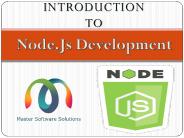TinyTemp Node - PowerPoint PPT Presentation
1 / 16
Title:
TinyTemp Node
Description:
VISION: Millions of self-powered sensor/transceivers, ... Bread Maker. 1.3. 385. Wooden Deck with People Walking. 0.2-1.5. 60. HVAC Vents in Office Building ... – PowerPoint PPT presentation
Number of Views:56
Avg rating:3.0/5.0
Title: TinyTemp Node
1
TinyTemp Node
Eli Leland and Elaine Lai
Professor Paul Wright, Sue Mellers, Michael
Montero, Brian Otis, Rob Scewczyk, and Shad Roundy
BWRC Winter Retreat 2004
2
Energy Scavenging
GOAL Design an infinite life power source for a
sensor node APPLICATION Wireless Sensor
Networks VISION Millions of self-powered
sensor/transceivers, each the size of a speck of
dust, will infiltrate a building and create a
smart environment PROOF OF CONCEPT To power a
Mica2Dot Mote using vibrations from a wooden
stairway in the Naval Architecture Building
3
Battery, Solar, and Vibrational Energy
4
Common Sources of Vibrations
5
The Piezoelectric Effect
- Constitutive Equations
Usable Modes of PZT
d strain s stress Y Youngs modulus d
piezoelectric coeff. D electrical
displacement e dielectric constant E electric
field
6
Piezoelectric Bimorph Generators
7
Wooden Stairs
Peak Frequency at 26.8 Hz
FFT of frequencies
Power generator must match peak frequency
of vibration source for max power output
Vibrations from walking down stairs
8
Bender Design
- Characteristics
- Piezoelectric PZT
- Tungsten Alloy Mass 52 g
- Beam Dimensions
- 1.25 x 0.5 x 0.02
- Behavior
- Resonant Frequency 26.8 Hz
- Power Output 450 µW
40V peakto-peak output from bender when someone
walks down the stairs
9
Tiny Temp
Storage Capacitor
Power Circuit
Mote
Piezoelectric Power Generator
Thermistor
10
Power Circuit
Voltage Out to Mote
Voltage In from Bender
Rectifier
Voltage Regulator
Storage Capacitor
Comparator (3.5V 5V)
Regulator
Enable
VIN Piezo Bender
Vout 3.3V DC
Comparator
CST
6600µF
11
Load Requirements
- Mica2Dot Mote
- 3.3 Input Voltage
- 800 ms Startup Time
- 45 mW to take temperature reading and transmit
information
12
FDM Packaging
Upper Case
Temperature Sensor Hole
Capacitor Holders
PCB Holder
Bridge
Bender Platform
Power Circuit PCB
Case Tabs
Lower Case
Capacitors
Mote PCB
Bender Mass
PZT Bender
13
Proof of Concept
- Procedure
- 3 people ran on the stairs for 40 minutes
- Results
- 3.28 V for 816 ms
- 2 temperature readings transmitted
14
Next Step Short Term
Mica2dot mote
Charge Up Time
PicoRadio-based node
Efficiency
15
Next Step Long Term
Design a variable resonant frequency MEMS bender
which adapts to vibration sources with different
peak frequencies.
16
Many Thanks!
- Thanks so much to Professor Paul Wright, Sue
Mellers for their support and help! - Thanks also to Brian Otis, Rob Szewczyk, Mike
Montero, Elizabeth Reilly, and Shad Roundy for
their advice and continuous support! - Thanks to the California Energy Commission for
their sponsorship































